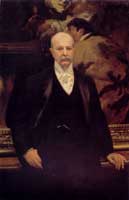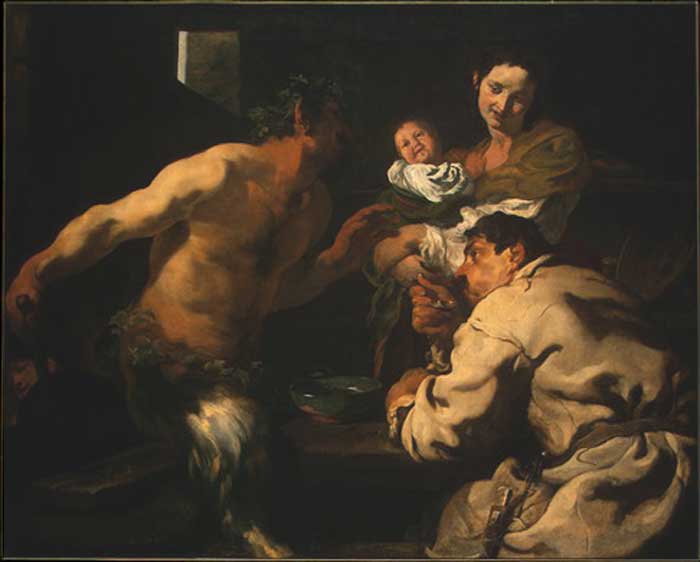|
The Satyr and the Peasant
Johann Liss, German (c.
1597-1631)
c. 1623/1626
National Gallery of Art, Washington, D.C.
Oil on canvas
133.3 x 167.4 cm (52 1/2 x 65 7/8 in.)
Widener Collection
1942.9.39
Jpg: NGA
From: National
Gallery of Art, Washington, D.C.
The unusual subject of
this painting comes from one of Aesop's fables. In his Man and the
Satyr, he related how a demigod helped a peasant who was lost on a
wintry day. When the mortal put his chilled fingers to his mouth to
breathe warmth onto them, the immortal satyr was astonished. Later, in
thanks for the satyr's guidance, the peasant invited him to eat. The
soup being hot, the man blew on his spoon to cool it. Johann Liss
portrayed the tale's climax when the satyr jumps up in disgust,
proclaiming, "From this moment I renounce your friendship, for I will
have nothing to do with one who blows hot and cold with the same
breath" -- the moral being that all humans are hypocrites because they
inconsistently blow hot and cold.
Johann Liss was among
the initiators of the dynamic baroque style of the 1600s. The sonorous
color scheme shows his knowledge of past Venetian masters such as
Titian and Veronese, while the dramatic conflict of light and shadow
reveals an acquaintance with the spotlighting which Caravaggio
concurrently employed in Rome. But the main influences here are the
energized movement and robust figure types derived from the
contemporary Antwerp geniuses, Jacob Jordaens and Peter Paul Rubens.
( NGA)
The
painting was gifted to the gallery by Peter A.B. Widener's son.
John Singer
Sargent

Peter A. B. Widener
1903
(behind the figure is The Satyr and the Peasant
owned by Peter Widener)
Note:
|





